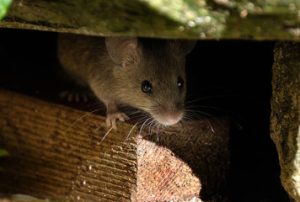With a bustling city, roof rats are a common problem for homeowners. Regular maintenance like rodent-proofing, storing food in airtight containers and securing trash bins can help prevent an infestation.

Roof Rat Removal Service Texas offers inspection, trapping and prevention measures to address an infestation. Their humane removal process prioritizes animal well-being and focuses on long-term solutions.
The sound of scratching in the ceiling at night can send a homeowner into a panic, as it may indicate that there are rodents living inside of the house. It can also cause property damage and pose a health risk. Thankfully, this is one problem that can be resolved by hiring professional roof rat removal services. These pest control experts are trained to handle the infestation safely and humanely, ensuring that the rodents do not come back.
Commonly known as black rats or wharf rats, roof rats are small rodents that inhabit higher parts of buildings and other structures. They are excellent climbers and prefer warmer climates. Like their Norway rat counterparts, they are skilled burrowers and create extensive tunnel systems for shelter, food storage, and nesting. Unlike the scaly exterior of Norway rats, the elongated bodies of roof rats are covered in smooth, dark fur. They also have large ears and pointed snouts.
Because they are opportunistic feeders, roof rats will eat anything that is readily available. This makes it important to store all foods in airtight containers and clean up crumbs and spills promptly. Also, homeowners should keep trees and shrubs trimmed so they do not provide climbing points to the roof or walls of the home. Sealing entry points, including cracks in the foundation, gaps around pipes, and damaged roof vents is another way to deter these rodents.
Often, roof rat problems can be hard to detect because of their quiet and sneaky behavior. However, some of the most telling signs of a rat infestation include: Scratching noises overhead at night, droppings in food bins and cabinets, chewed wires, and dark, greasy rub marks along walls and baseboards. Rat infestations require immediate action to prevent health risks and structural damage.
The team at Rodent Retreat is trained to identify the severity of a rat infestation, then implement strategies for their humane removal. The process begins with a thorough inspection of the property, followed by an analysis of rat behavior to develop a customized plan for extermination and prevention. By using innovative methods and prevention measures, the pest management experts at Rodent Retreat ensure a lasting solution to your rat problem.
Exclusion
Known for their ability to climb walls and ceilings, roof rats often invade homes by gaining entry through unprotected vents, wall cavities and roofline junctions. Their slender bodies and large ears enable them to fit into tight spaces and squeeze through gaps and cracks. Females produce numerous litters each year, leading to rapid population growth within protected, secluded locations. When a problem is left unchecked, roof rat populations can cause serious structural damage and health concerns.
These omnivorous rodents feed on both plants and animals, and their droppings contaminate food products and spread dangerous zoonotic diseases such as plague, murine typhus, salmonella, leptospirosis, rat-bite fever and hantavirus. Their gnawing activities can damage wiring, destroy insulation and cause other costly property damage. Their urine and saliva also carry allergens that can trigger respiratory problems in sensitive individuals.
While many homeowners can manage small infestations with traps and bait, established roof rat colonies require a more comprehensive approach. Experts like those at Rodent Retreat begin each service with an initial inspection and a detailed analysis of rat behavior patterns, which helps to determine the extent of a problem and implement prevention strategies.
In addition to sealing entry points, the exclusion process also includes eliminating food sources that can attract these rodents and preventing them from accessing indoor areas. The company recommends storing food in airtight containers, keeping garbage bins tightly sealed and removing outdoor pet foods to discourage rats from seeking out human meals. Regularly trimming ivy, vines and ground-cover that act as hiding places or cover for rodents also helps to prevent pest infestations.
Once an established roof rat population is identified, the company can develop targeted removal strategies that take into account a property’s unique characteristics and the particulars of the infestation. The company will use a variety of techniques to eliminate the rat population, including trapping, poisoning and snaring. The technicians will also perform a thorough pest control audit of the entire property and implement ongoing prevention measures to ensure that a problem never returns. In some cases, these services may include a complete interior and exterior cleaning of the property to remove allergens and other odors that can attract ants, termites and other pests.
Prevention
Roof rats are opportunistic feeders that can access homes by climbing up trees and walls or through open attics. Known for their large ears, long tails, and slender bodies, they are adept climbers and can squeeze into the tightest spaces. Once inside, they can cause serious damage to property and disrupt people’s lives. They are notorious for spreading diseases such as leptospirosis and rat-bite fever, and they can also cause structural damage by gnawing on wires and insulation. To keep these rodents away, homeowners can prevent entry through the attic by keeping attics clear of vegetation and sealing entry points.
Regular maintenance is also critical for preventing roof rat infestations. Keeping food scraps, garbage, and compost containers securely sealed, storing firewood and gardening tools on elevated platforms, and regularly trimming tree limbs can all help deter these pests from nesting and burrowing on or near structures.
To further prevent a roof rat infestation, homeowners should also inspect their property for any gaps or cracks that could serve as an entrance point. This includes checking under sinks for drips and leaking pipes, as well as looking at the foundation for any openings larger than a quarter inch. These can be filled with caulk or expandable foam to stop rats from entering the house.
If you suspect you have a roof rat infestation, contact the professional rodent control experts at Rodent Retreat for quick and effective solutions. Their comprehensive process starts with a thorough inspection and a detailed analysis of rat behavior to identify entry points and the extent of the infestation. Then, they will develop a customized removal strategy that addresses the specific needs of each client.
Using humane traps and exclusion tactics, Rodent Retreat will safely remove these rodents from your home and property, and implement ongoing prevention plans to ensure that they never return. For more information about their services, or to schedule a free consultation, contact them today. Their customer service is second to none, and they offer a lifetime guarantee on their work. Rodent Retreat is the leading roof rat removal service in Texas, and they prioritize humane trapping methods to preserve the safety and value of your property.
Removal
Roof rats (sometimes called black rats, ship rats, or kippas) are renowned for their climbing skills and preference to live in elevated areas like attics and ceilings. These agile pests are opportunistic eaters and can quickly find a variety of food in and around homes and businesses. They can also cause extensive structural damage by gnawing through insulation, electrical wires, and pipes.
Rodent control services for roof rats focus on identifying the source of the infestation, sealing entry points, and eliminating food sources. The service provider should also advise on preventive measures to minimize the risk of future infestations.
The removal process for this common rodent pest starts with a detailed inspection of the property and a thorough analysis of rat behavior and habits. The professional exterminators at Rodent Retreat then develop customized removal strategies to address the specific needs of each property. These strategies may include trapping, humane baiting techniques, and more.
Once a rat problem is identified, the service provider should seal entry points with materials that rats can’t chew through. This may involve putting caulk, steel wool, or other material in place. It is also a good idea to trim vegetation that hangs over or grows near buildings, fences, and utility lines. This should include yucca, palm trees, bougainvillea, ivy, oleander, and other thickly matted plants. Regularly clean out debris piles and sweep gutters.
Rats are prolific breeders, and a single pregnant female can turn into dozens of offspring in just a few months if left unchecked. Combined with their agile climbing abilities, a rat infestation can grow out of control in no time.
A reputable company should have a proven track record of providing effective solutions for rat problems, including humane trapping and removal of the rodents. They should also offer a comprehensive maintenance program that includes ongoing inspections, sealing, and prevention. This will help ensure that the pests don’t return in the future and keep property owners safe and secure. If you’re worried about a potential rat infestation, contact the pros at Rodent Retreat today to discuss your options for rodent control in Trophy Club, TX.
